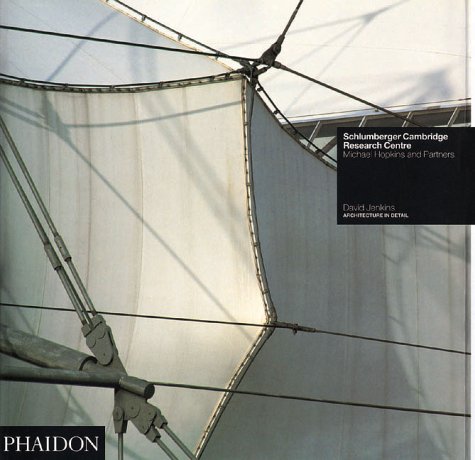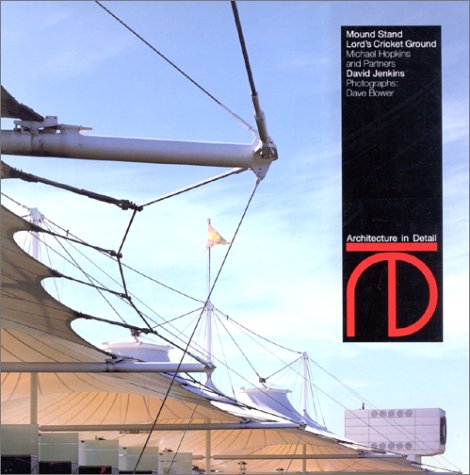Architecture in Detail
5 total works
Schlumberger Cambridge Research, Michael Hopkins and Partners
by David Jenkins
Published 1 September 1993
Part of a series of technically informative monographs embracing a broad spectrum of internationally renowned buildings. This work deals with Schlumberger Cambridge Research building, and includes a comprehensive set of technical drawings and working details.
The Clore Gallery is one of London's most challenging new galleries, built to house the Tate's collection of paintings by J.W. Turner. Its counterpart, the Tate in Liverpool, is a conversion of a 1845 warehouse to an art gallery. This book provides a detailed record of each building.
The Mound Stand, Lord's Cricket Ground, London 1987, Michael Hopkins and Partners
by David Jenkins
Published February 1991
An introductory essay preceding numerous coloured and black and white illustrations tells the story of this pavilion which was designed by Michael Hopkins and built for the public at Lords Cricket Ground and funded by Paul Getty. It is a highly technical version of the traditional village green marquee. The pavilion itself is described as having a traditional brickwork colonnade supporting a fabric roof which lets diffused light through onto the stand below. A particular feature of the structure is the manner in which the roof is suspended by a system of tensed steel cables and compression members held in balance. This monograph gives an illustrated narrative account of how this work came about, analyzes its performance and documents the building by means of a full set of scaled technical drawings which emphasize the steel riggins and fittings and by 30 pages of large-format photographs (many in colour). The text is intended for use by architects and architectural students; it is also expected that cricket enthusiasts will find the book of interest. As part of the "Architecture in Detail" series this book does not carry a contents list.
The common layout of the books in the series is: essay, photographs, specially commissioned drawings, reference details (bibliography and chronology). Each of these monographs is designed to be a complete and accurate archival record and intended to be the standard reference on that building for students and scholars as well as practising architects.
The common layout of the books in the series is: essay, photographs, specially commissioned drawings, reference details (bibliography and chronology). Each of these monographs is designed to be a complete and accurate archival record and intended to be the standard reference on that building for students and scholars as well as practising architects.
"Financial Times" Print Works, London, Nicholas Grimshaw and Partners
by David Jenkins
Published 28 February 1991
The Financial Times Print Works, designed by architects Nicholas Grimshaw and Partners is one of the most acclaimed new buildings in London, winner of seven architectural awards in 1988 (the year of its completion), and a landmark on the eastern approaches to the city. This sheer glass structure, with its delicate metal framing, is one of the best examples of the "high-tech" school of design which has been Britain's principal architectural achievement in recent years. The building is of major interest to architects and engineers everywhere for the way it encloses the massive yet sensitive machine installations inside; and in the stylishness and elegance of its construction. Both of these aspects are fully discussed in the text, illustrated in the set of photographs (many in full colour), and recorded in the 14-page section of specially-drawn technical details. The book is part of the "ADT Architecture in Detail" series. The books do not carry a contents list. The common layout of the books in the series is: essay, photographs, specially commissioned drawings, reference details (bibliography and chronology).
Each of these monographs is designed to be a complete and accurate archival record and intended to be the standard reference on that building for students and scholars as well as practising architects.
Each of these monographs is designed to be a complete and accurate archival record and intended to be the standard reference on that building for students and scholars as well as practising architects.
The Units d'Habitation at Marseilles is a key building of the twentieth century, and a seminal work in Le Corbusier's portfolio. A precursor of buildings in Nantes, Berlin, Breiy en Foret and Firminy, it established, in built form, Le Corbusier's ideas of public housing that had existed only on paper for more than twenty years. David Jenkins argues that the Marseilles Units stands out as a powerful and convincing testament of Le Corbusier's faith in the principles of the Ville Radieuse and the Brutalist medium of rough cast concrete which in other, less able hands, have since been called into question.



